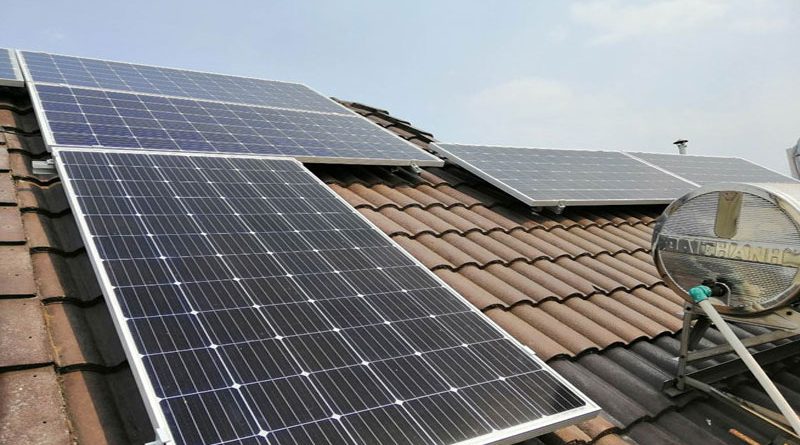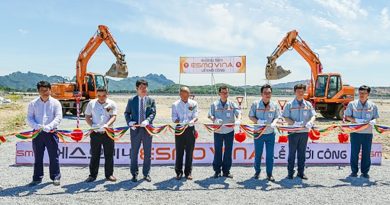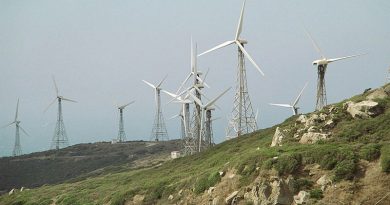Solar power to boom after Decision 13
 |
| Mai Van Trung |
The FiT2 is profitable for most of the projects located in central and southern Vietnam but may pose a headache for those in the north. With rooftop solar, the FiT2 allows completion of legal and regulatory investment documents and opens up new extensions due to the gross metering scheme added. It allows the wholesale of electricity generated from rooftop solar systems to medium voltage lines of Electricity of Vietnam (EVN).
In addition, the decision paves the way for all of the solar farms which have been provincially approved before November 23, 2019. The eligible extension is reasonable because the developers have been struggling to pass the provincial level approval. Some have even paid for the land – if projects have a power purchase agreement (PPA) and began to construct before November 23, 2019, the total capacity to reach FiT2 is 320MW.
According to the Ministry of Industry and Trade (MoIT), there are 126 projects of a total of 8,960MW capacity listed in the master plan and 260 projects (28,300MW) in the waiting list for master plan approval. They are all eligible to enjoy the FiT2 if commercial operation date (COD) is hit before the deadline. The market will be excited and government authorities will have another busy year as there are many challenges in hydroelectricity due to extreme droughts in the central region; continuous delays and regional protests against coal-fired plants; and liquefied natural gas plants taking a long time to build and prove their competitive pricing. Along with the increased FiT for wind and biomass recently announced, Vietnam is undergoing a strong energy transition towards renewable energy following the directives and goals indicated in the Politburo’s Resolution No.55-NQ/TW on the orientation of the National Energy Development Strategy of Vietnam to 2030, with a vision to 2045. The solar farms market is fostered not only by the FiT2 but also the pilot auction projects advised by the Asian Development Bank, and the first batch of direct PPAs to utilise the master-plan-approved projects which could not catch the deadline of the first round FiT last year.
There is huge potential for international developers and investors to join mergers and acquisitions activities. For some multinational companies, this year is an important milestone for their green commitments (such as 20/30 per cent of energy used for their operations purchased from solar and/or wind power systems).
The direct PPA is the only choice to fulfill their green energy proportion instead of depending on the limit of 1 megawatt-peak (MWp) capacity of rooftop solar systems. There might be a flow of capital meant for wind farms switching to solar farms because of the wind turbine supply chain in the US and EU suffering from the ongoing health pandemic, while the solar module manufacturing industry in China is recovering with huge capacities added and time required to build solar farms varying from six to eight months. The construction of solar farms to enjoy the FiT2 can be restarted in early May if the coronavirus pandemic is controlled. Based on statistics from the MoIT, 1,600MW of solar farms have a PPA (not constructed) and 800MW (600MW in Ninh Thuan province and 200MW in Long An and Quang Tri provinces) projects are under construction and also have a PPA already. They are very likely to hit COD before the end of the year.
If half of the projects are approved in the master plan, roughly 4,000MW can be fast-tracked to COD before the deadline. It is estimated that more than 6,000MW can be realised this year thanks to local improved construction capability last year. One point to hamper the construction of solar farms is the rainy season in central and southern Vietnam between June and October.
Meanwhile, transmission line congestion problems resulting in power curtailment may not be a frequent issue because of the efforts of EVN and the private sector, which recently allowed building 500kV lines. Related to solar rooftops, installation seems not to be solely impacted by the FiT thanks to its self-consumption capability.
According to EVN, the total rooftop solar capacity installed by the end of December 2019 and in January-February this year were 377MWp, 429MWp, and 470MWp, respectively (95 per cent in central and southern Vietnam, and 5 per cent in the north). There is no available data for March yet, but if the same momentum applies, it is expected to have 20-30MWp newly added to confirm 500MWp (at least 54 per cent industrial, 12 per cent commercial, and 29 per cent residential) by the end of March. These capacities are based on the self-consumption business model (the power generated from rooftop solar systems being partially consumed by the rooftop owners, while the excess power is fed to the EVN grid for the FiT).
This business model places many burdens on developers to scale up their project pipeline. The new points from Decision 13 involve offering a gross metering scheme (rooftop solar projects can sell 100 per cent of electricity to EVN at FiT2 through their own distribution lines and transformers); specifying the rated capacity of a project’s 1MW limit (the rated capacity of inverters and/or transformers instead of rated capacity of solar modules in MWp); and legally enabling developers to sell surplus energy to EVN by issuing their invoices instead of EVN buyers, thereby allowing industrial developers who are selling electricity to factories to purchase electricity from rooftop solar systems from the factories at an agreed price. The ground-mounted and floating solar farm regulations, licences, and PPAs are all clear to go but there are many things to do with the regulatory framework for rooftop solar through the circular from MoIT and detailed guidance from EVN. For instance, the definition of solar rooftop systems in the decision should be clearly clarified.
Carefully studying the statistics released by EVN, it is surprising that the percentage of kWh fed back to the grid to enjoy the FiT varies from 50-60 per cent of total generation. These numbers do not reflect the self-consumption nature of rooftop solar schemes. Another hurdle for rooftop solar development is the reluctance of local commercial banks to finance the projects with better long-term packages with no collateral. Green finance from the international market is ready to penetrate Vietnam but it is required that international platforms are adhered to.
Therefore, we cannot expect the cost of capital for local developers to lower within this year. The 10 per cent decrease of EVN electricity rates applied for commercials and residentials to cope with the impacts of COVID-19 might prevent households, hotels, and resorts from triggering their interests in savings from rooftop solar ventures.
Hence, the main engine for rooftop solar to grow is expected to be the industrial sector.
Source: vir.com.vn









